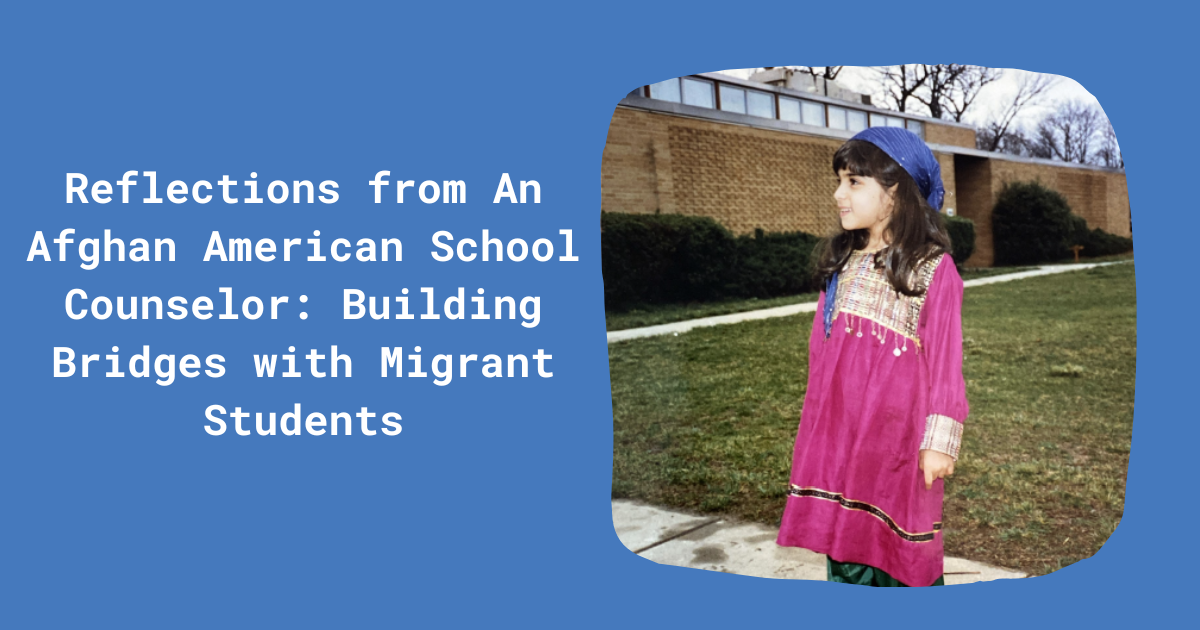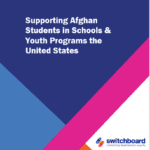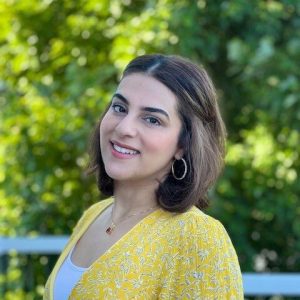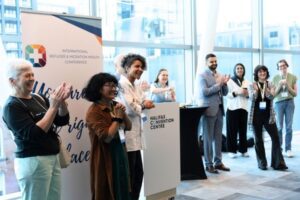Imprinted Memories, September 1987
The strong smell of freshly sharpened pencils and lemon scented floors dominates as I cling to my father’s hand and hesitantly walk down a long hallway to my kindergarten class on the first day of school. When we arrive at the door, I hastily sit on his feet in a desperate last attempt to prevent us from entering. He effortlessly picks me up and wipes away my tears, and I can see from his eyes it’s difficult for him to let me go. The beating of my heart is louder than the classroom filled with students who are now gazing at me with wide eyes and curiosity. My teacher approaches with a warm smile and puts out her hand as she welcomes me to the classroom. She walks me toward a desk. I attempt to collect myself and stop the tears that continue to stream down my face. I look back to see if my father is still at the door, but he has left. My heart sinks. I’m in a room filled with strangers and there are so many unknowns. What happens at school? Will they like me? Will I understand what they’re talking about? Why do I look so different than everyone else? The rest of my first day of school is a blur, but I remember my relief at dismissal time. There are some memories that leave lasting impressions and give us a deeper understanding of ourselves and the world around us. On that unforgettable day, as a five-year-old Afghan American girl in a predominantly White school, I realized I was different.
School Experiences as a Child of Refugees
Children of immigrants have shared experiences and understandings that set us apart from others. There is a story, a journey, and a struggle behind our family’s history and our acculturation practices. Like millions of Afghans, my mother and father fled Afghanistan after the Soviet invasion and arrived in the United States as refugees in March 1981. They had only $100 in their pocket and no idea what to do next. They left everything behind including their families, homes, careers, support systems, and country. In a matter of months, everything they knew about life changed as they started their lives in Northern Virginia and began their journey of integration. I was born a year later in June 1982, and even though I am a U.S. citizen who has only known life in the United States, I grew up feeling misplaced, especially at school.
Two particular occasions stand out. The first was picture day. Everyone in my class was dressed up, and the girls were wearing beautiful dresses with matching bows in their hair. I showed up with messy hair and pants on. I laugh now when I look at that class picture, but at the time it was another reminder that I was different. My parents had no idea what picture day was, but they found out after seeing my picture later. The second memory involved a Dr. Seuss celebration. My class made green eggs and ham after reading the book together. Everyone was so excited. I wanted to share in their collective joy and be part of the experience, but I was left out because the eggs had ham. As a Muslim, pork products are prohibited, and my school didn’t have enough awareness at the time to make an alternative dish without ham. I just watched as all the other children indulged and filled their bellies.

Around the end of the school year, my teacher sent a letter to my parents suggesting I repeat kindergarten. It made matters worse that my birthday is in June, so I was younger and physically smaller than the other children in the class. In addition, I couldn’t properly hold a pencil, had no letter recognition, and consequently couldn’t write my name. I wasn’t flagged as an English Language Learner (ELL) or English as a Second Language (ESL) student (as it was formerly called), because I comprehended the language well. But I was too shy to speak and struggled with fine motor skills. In Afghanistan, students are rated in a consecutive order that corresponds with how strong they perform academically. Therefore, if you are the highest achieving student, you are known as “Awal-Numra,” or the number one student in the class. I come from a family of high achievers, so my parents decided to push me forward to first grade. They understood that I wasn’t excelling due to my lack of exposure rather than my ability.
My parents were freshly introduced to educational practices in the United States, such as the importance of pre-school, reading books to your child, and borrowing books from the public library. As they started to learn about these avenues, it sharpened their capacity to support my learning. My mother purchased letter-tracing workbooks from the dollar store, and I worked hard that entire summer to strengthen my fine motor skills, write my name, and hold a pencil properly. I started first grade feeling a little more confident in my abilities, but clearly still behind because most of the students were reading. This moment, though, was a turning point in my life—and I owe it to my teacher at the time, Mrs. Christian.
The American educator Stephen Covey once said, “The deepest hunger of the human heart is to be understood, for understanding implicitly affirms, validates, recognizes and appreciates the intrinsic worth of another.” I came across this quote in high school and it really clicked for me. I kept it on my desk for years and felt like he wrote this quote for me, because I always yearned for that acceptance and understanding when I was in school. From the first day in Mrs. Christian’s class, I felt a connection with her. She took a keen interest in learning more about Afghanistan, my family, our foods, and different aspects of my cultural background. She embraced my differences and believed those differences should be celebrated. She also spent days with me after school helping me learn to read. I started to feel more confident to speak up and step out of my quiet comfort zone in class.
Her efforts paid off, because I started reading and writing, and I developed a love for these activities. My mom would take me to the public library every couple of weeks to check out different books. There was a program called “Book It,” where you could earn free pizzas based on how many books you read. On several occasions, I proudly submitted my “Book It” vouchers to the local pizzeria and treated my entire family to dinner, which felt so fulfilling. I understood from a young age they were making countless sacrifices for a better life, and I didn’t want to disappoint them. I completed first grade by earning a “Young Author’s Award” for the best class book. This shift in my educational journey in just one year catapulted my self-esteem and showed me that I could do anything I set my mind to. It would not have been possible without Mrs. Christian, because she believed in me and made sure I knew it.

Full Circle Moments
Ironically, 20 years later, the woody and lemony scents that once triggered worry and fear were intertwined into my everyday existence when I began my career as a school counselor. This time, I was not going to be crying down the halls but rather providing social-emotional support to the children whose hands I would hold as I helped them feel a sense of belonging in their learning environments. Life works in mysterious ways.
In my time as a counselor, I met an amazing reading specialist—and there was something so familiar about her. Years after working with her, I became her friend on Facebook and learned that her maiden name is the same as that of my kindergarten teacher. I realized this was the person she had resembled all along. My kindergarten teacher is her mother! Who would have thought that 20 years later, I would be working alongside the daughter of my kindergarten teacher? She shared with her mother that I am also an educator, and it felt like I had come full circle.
Key Takeaways for Stakeholders
It takes a village to raise a child, and this applies to schools as well. One teacher made a difference in my journey, but educators also need to rely on one another to support students collaboratively and make an impact. Students benefit most when they have access to their school counselors, mentors, and other specialists so they have a variety of people in the building they can connect with. It’s important to take advantage of small pockets of time to interact with students one on one. Even something as simple and effortless as a warm smile and greeting in the hallway can make a world of difference to a child. It creates a sense of belonging and acknowledgement that all children need, especially children who are new to the country and its learning environment.
In our upcoming blog about school integration, we will discuss specific strength-based strategies schools can utilize to create fostering environments for refugee students. In the meantime, we leave you with recommendations that positively influenced my journey and will hopefully support other students as well.
- Teachers: Build relationships with your students using a strength-based approach. Allow them to tell their story, embrace their culture, and process their past. When educators take an interest in their students by allowing them opportunities to share, it builds trust and helps create a more welcoming environment. This can be achieved through activities already built into the school day such as morning meetings or project-based learning.
- School Counselors and School Social Workers: Get to know the newly arrived refugee students in your schools, and set up time for lunch bunches so they can interact with other students. Provide opportunities for them to participate in counseling groups and build their social-emotional skills where they have a safe outlet to share their feelings and thoughts. Reach out to their families and provide relevant resources that can help with school integration. Many refugee families understand the roles of teachers but need guidance on the roles of other school personnel. Reaching out to them can create a bridge toward further communication and support.
- Administrators and Parent Liaisons: Provide opportunities for parents and students to become acquainted with the school community and educational practices. Host events such as parent coffee talks, multicultural nights, or other school-wide initiatives. Ensure all correspondence that is sent home is available in the home language of the student.
- Parents and Guardians: Ask questions to gain clarity and understanding of school practices and norms. Partner with your child’s teacher by trying to learn about classroom culture and the expectations that teachers share with parents at the beginning of the school year and during conferences. Provide your child with learning opportunities outside of school through the local library or after-school programs. And be an advocate for your child, because you know them best.










